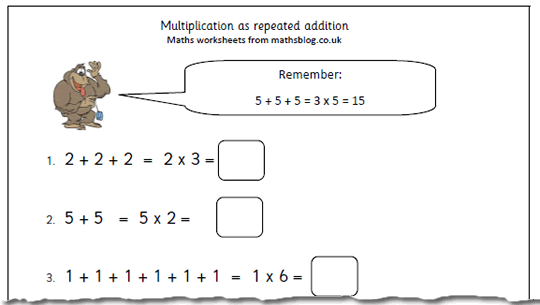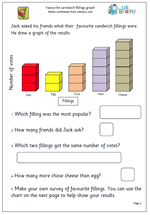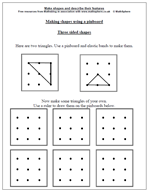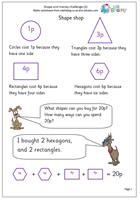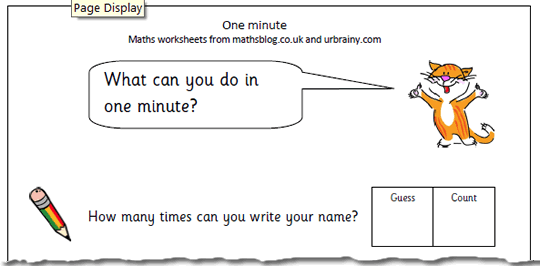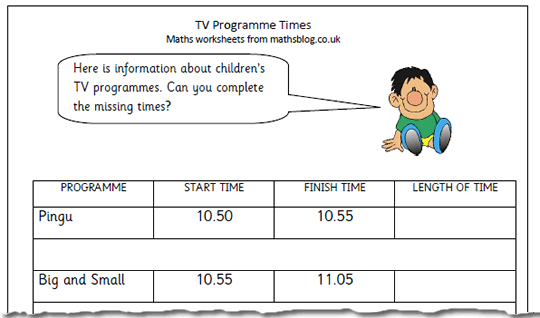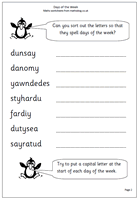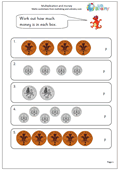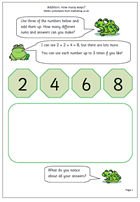One of the targets for year 2 children is to represent repeated addition as multiplication. certainly, one of the best ways of explaining multiplication is to think of it as repeated addition. So, a multiplication such as 4 x 3 is the same as adding 4 three times (4 + 4 + 4) or 3 lots of 4. Of course, 3 lots of 4 is the same as 4 lots of 3 which implies that multiplication can be done in any order, unlike division or subtraction. 
Children need to be quite confident in counting up in twos, fives and tens before going onto multiplication of these numbers.
This set of worksheets looks more closely at multiplication as repeated addition, but it would be a really good idea to set out some practical examples of repeated addition, using counters, sweets, lego etc, grouping them into twos or fives and counting each set.
Thanks to urbrainy.com for this page; it’s a great place to visit for early years maths and there is plenty for you to try free.
